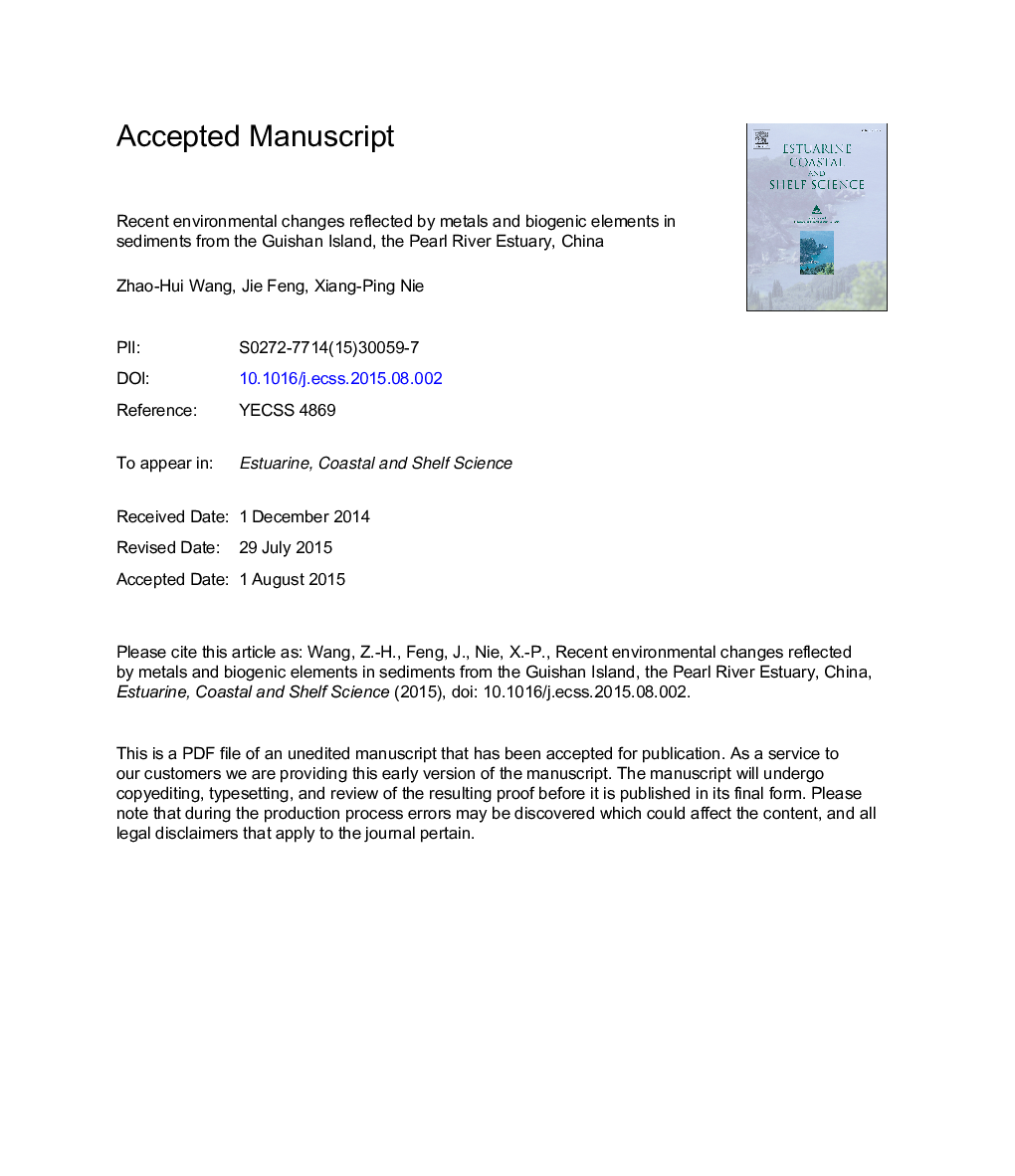| Article ID | Journal | Published Year | Pages | File Type |
|---|---|---|---|---|
| 6384747 | Estuarine, Coastal and Shelf Science | 2015 | 38 Pages |
Abstract
The Pearl River Estuary is the largest estuary in the Southern China, and the river delta is one of the fastest developing regions and densely populated areas in China. In this study, metals and biogenic elements were analyzed from surface sediments and a 62Â cm long core collected from the Guishan Island sea area in the Pearl River Estuary of the South China Sea in January 2009. The high concentrations of TOC, TN, TP and BSi indicate high nutrient levels and diatom productivity. TOC origins from both marine and terrestrial sources. Most of the anthropogenic metals are lower than the marine sediment quality guidelines (SQGs), however As and Cu concentrations are higher and have potential biological risks. Enrichment factors (EFs) suggest there are pollution levels of As, Cd, and Cu at some stations. Correlation and principal component analyses show that all the metals originate from both lithogenic and anthropogenic sources. Vertical profiles of biogenic elements and metals suggest that contamination began in the 1980s, and became serious from the early-to mid-1990s, the period of local rapid development. Declining concentrations of biogenic elements and metals since late-1990s might be attributed to the increase in government environmental regulations. However, the growing industrial development has surpassed the government regulation after mid 2000s. The vertical distribution of biogenic elements and metals in this study corresponds well to the urbanization and industrialization of the Pearl River Delta, and to the development of Guishan Island since the 1980s.
Related Topics
Physical Sciences and Engineering
Earth and Planetary Sciences
Geology
Authors
Zhao-Hui Wang, Jie Feng, Xiang-Ping Nie,
